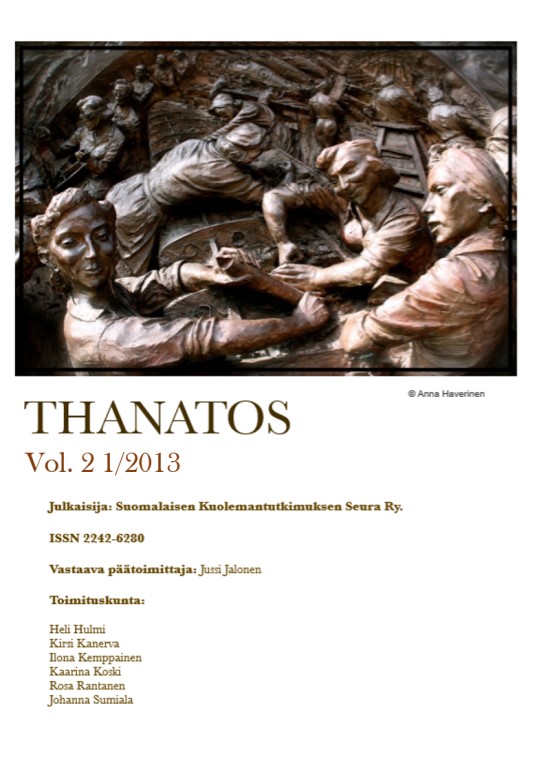Yhteisön ympäröimänä vai uskotun ystävän saattamana? Kuolinhetken yhteisöllisyys 1400-luvulla
Abstrakti
The goal of this article is to examine how populous place deathbed was in the 15th century. In early historical research on the subject of death, the communality of pre-modern death has been taken almost for granted. Philippe Ariès has said that death was always a public occasion.
Using ars moriendi literature as my primary sources, I will determine if there existed also a more private way of death in the 15th century. These “art of dying” guides directed the clergy and the laity on how they should act by the deathbed. In addition, I use hagiographic sources from Sweden and Rome. The hagiographic sources were made during the canonization processes, which were held to investigate if someone should be deemed a saint or not. In these processes, people discussed the miracles they had witnessed. In many of these miracles, people are recreated from the dead. Thesecases give us important information about the communal aspect of death. Hagiographic sources are, in many ways, problematic in historical research. However, bearing in mind for what purpose they were made, one can find many interesting details on everyday life of ordinary people.
Ars moriendi guides and hagiographic sources give us a comprehensive picture of the communal aspect of death in the 15th century. Not only one opinion existed in regard to communality in the face of death. According to the Ars moriendi guides the community had an important role on the first phases of the death bed scene. However, at the very last moments of human existence there was to be only one trusted friend by the dying person. In this sense, the hour of death was a process, which included different stages. The communality around the death bed varied according to different stages of the hour of death. According to the ars moriendi guides, death with only one person present gave the dying individual better chances to be saved.
In most of the cases in the hagiographic sources the dying person is surrounded by a crowd of people. However, also in these sources there are some cases where only one individual is present by the dying person at his last moments. Also, there are cases in which only the closest family members were by the death bed. Thus, there seems to be three aspects of communality around the death bed: public, private and family-concentrated. Hence, it is clear that people did not always die surrounded by many people: a private death was an alternative to a crowded bedroom.
Tiedostolataukset
Julkaistu
Numero
Osasto
Lisenssi
Copyright (c) 2023 Jyrki Nissi

Tämä työ on lisensoitu Creative Commons Nimeä-EiKaupallinen-EiMuutoksia 4.0 Kansainvälinen Julkinen -lisenssillä.





